Executive Summary
Communicating clearly and effectively online can often be a challenge, and the surge in digital communication during the pandemic has increased the potential for misinterpreting messages. Without the verbal inflection available in oral communication, conveying tone through written communication is much more difficult. In the absence of these tonal clues, our brains fill in the gaps with our own assumptions, which may not match up with the intended meaning!
Furthermore, online messages can lack mutually agreed-upon expectations for how to communicate; in a face-to-face meeting there is an immediate back-and-forth exchange of ideas with the opportunity to notice body language and facial gestures, but when communicating online, the time between responses (and the recipient’s unwritten/unspoken reactions) can be much more ambiguous. This can lead to anxiety and frustration, which can, in turn, lead to a passive-aggressive tone-deaf dance of digital (mis)communication. Stress related to online communication can lead to general unhappiness in an advisor-client relationship, which can adversely affect client satisfaction and retention. This is a particularly important risk to be aware of now, with the skyrocketing rise of digital communication!
Two simple changes – clearly stating what is needed and offering a concrete time frame to work with – can make a huge difference in setting clear expectations and reducing any potential stress that would otherwise arise from misinterpreting ambiguous expectations. One effective method of setting expectations for responding to email is using an email signature to outline what clients can expect from you. For example, you could write in your signature that you only check email on certain days of the week or do not respond to emails after 4 pm. Additionally, it helps the recipient understand expectations when messages include explicit descriptions of what is needed, and a deadline for when they are needed.
In addition to setting clear expectations, thoughtfully setting up the appropriate tone in digital messages can also have a tremendous impact to help mitigate potential stress and frustration that can arise from digital communication. For example, you can use punctuation marks (!!!) or emojis (😊) to convey tone. For those who feel uncomfortable using emoji faces or lots of exclamation points in their messaging, recording a simple video message (so that the recipient can hear your use of vocal expression and see your facial gestures) can also be a way to communicate tone.
Ultimately, the key point is that effective digital communication can reduce stress levels for both the sender and the recipients of the message, as good digital communication helps the recipient understand what the sender is trying to tell them and what needs to be done, without the need for body language or vocal cues. Accordingly, working to make digital communication more effective by setting clear expectations and thoughtfully setting up the appropriate tone not only helps advisors communicate with clients more effectively, but also reduces the stress levels for both advisors and their clients as well!
Written Digital Communication Lacks Tone & Expectation – Taking Communication From Bad To Worse
While most people may spend a lot of time communicating with others, it is very common for many to struggle with everyday communication challenges. From striving for effective conversations in group settings (who talks, who listens, and how to listen well) and with client couples (harmonizing couple goals with individual goals), to addressing ways to alleviate client anxiety (talking about money feels judge-y and scary), there are so many communication hurdles advisors face every day to build good relationships with their clients.
In addition to the challenges that advisors may face in getting their messages across clearly, listening to others in itself is its own challenge; as while we tend to think that we are listening carefully to what someone is saying to us, in reality, we are often only thinking about what we will say in response and how we will deliver the response. Even when we are making every effort to listen, we can sometimes fail to understand or correctly interpret what a client or colleague is saying, as nearly everything could have more than one meaning.
For example, suppose that my boss assigned a report to me last week, which I completed and turned in to him the next day. However, after a few days, he says to me, “Thanks Meghaan, the report is looking great. I look forward to this being done.”
But… what does ‘done’ look like for my boss? Because I thought what I turned in was done!
And what does ‘done’ really look like for me? I guess I will add to what I did – without being totally clear on what is currently incomplete.
Adding to the issue of encountering potentially ambiguous verbiage, it can be very easy for people to also misinterpret the tone of voice used to deliver a message. My father has an incredibly dry sense of humor and can say just about anything with a straight poker face, and if you don’t know him, this can be really confusing. For example, my father was recently at the doctor’s office with my step-mother who had just had foot surgery.
Nurse: Things are looking good, just keep resting.
My Father (totally straight-faced): Well, how much longer before she can get back in the kitchen – I mean, it is just standing in the kitchen. Right?
Nurse (face horrified): Uh….
My Step-Mom: He’s joking.
Nurse (exhales, nervously laughing): haha....
I would assume my father then gave a wry smile, and all was well. Yet, again, the story illustrates just how easy it is to manipulate conversation and expectation.
The Absence Of Tone Leads To Misinterpreting Digital Communication
Importantly, when it comes to online communication, there are even greater challenges with misinterpreting messages than there are with verbal communication in person. Because with online communication, the things we already struggle with can be amplified. Without the verbal inflection available in oral communication, conveying tone through written communication is much more difficult.
 For instance, the book Digital Body Language by Erica Dhawan (a great title to pick up heading into 2022 with the COVID-19 resurgence) discusses studies suggesting that up to 50% of misinterpretation of digital communication arises from confusion resulting from a lack of tone. To hammer this point home, the author suggests imagining the impact of telling a loved one, “I love you”, but only being understood only half of the time! The importance of tone in digital communication applies to the world of financial planning, too. Imagine carefully explaining important next steps to a client who only understands 50% of what was said. How could such a client implement their plan effectively? Or working with a fellow advisor on a practice management project. If only half of what was discussed was understood by the fellow advisor, how much of the project could actually get completed correctly?
For instance, the book Digital Body Language by Erica Dhawan (a great title to pick up heading into 2022 with the COVID-19 resurgence) discusses studies suggesting that up to 50% of misinterpretation of digital communication arises from confusion resulting from a lack of tone. To hammer this point home, the author suggests imagining the impact of telling a loved one, “I love you”, but only being understood only half of the time! The importance of tone in digital communication applies to the world of financial planning, too. Imagine carefully explaining important next steps to a client who only understands 50% of what was said. How could such a client implement their plan effectively? Or working with a fellow advisor on a practice management project. If only half of what was discussed was understood by the fellow advisor, how much of the project could actually get completed correctly?
Examples of misinterpreted digital communication are very common and ubiquitous – just the other day I attempted to use humor with my boss through our online messaging program, Slack, and it didn’t work. My boss and I have a standing 10 o’clock check-in meeting every morning. Yet, given the holidays, sick kids, my own under-the-weather issues, and work obligations that morning, I found myself at my computer but still in my pajamas at 10 AM. I was not mentally ready for that meeting and laughing to myself about the insanity of the morning.
So, when my boss pinged me through our internal direct messaging system... my response was a somewhat sarcastic, but somewhat truthful reflection of how I felt.
My boss: Good morning, ready for our meeting?
Me: Morning, mostly?
My boss had no way to tell what I meant to express with my answer. She didn’t know what I was experiencing that morning, and ‘mostly’ could have meant many things. She may have been wondering if I was feeling like a mess. Or maybe she may have thought I needed 5 more minutes? Am I nervous? Am I making a joke? Am I being a jerk? Without any context, it was entirely ambiguous.
Thankfully, my boss knows me well and didn’t assume I was being a jerk. But imagine this with a newer employee or with someone that you do not work with all that often. For instance, if an associate advisor were to ping the lead advisor to ask if they were ready to join a video chat with a client and received an ambiguous response, how should the associate advisor react? If the client has been left waiting and is expecting to meet with the senior advisor, this could cause a great deal of anxiety for the associate advisor. So... is the senior advisor ready? Are they not? Should the associate start the meeting without the senior advisor?
Not being in the same physical space prevents people from simply looking into each other’s offices for visual signs that provide context to tonally deficient digital messaging. If the senior advisor wasn’t ready for this meeting, how will that impact the client? This can understandably lead to a nervous associate advisor a little rattled about getting on this call. Ambiguity can be a difficult thing to contend with and it’s found a lot in written digital communication, which tends to send our brains into tailspins.
Jokes, humor, playful cheekiness – many of the ways we bond and act friendly in person toward those we care about – can fall flat (or worse, be misinterpreted and cause offense) in the digital world. This is because our brains rely on tone to interpret important contextual cues that come with visual and verbal messaging (for example, my voice sounds different and I tend to smirk when I’m saying something ironic or making a joke).
Without tonal cues, though, our brains fill in the gaps with our own assumptions, largely biased by our own perceptions and viewpoints – which, without more context, may not match up with the intended meaning!
Expectations Are More Ambiguous With Digital Communication
Another reason that effective communication is more difficult through online messages is that there are often no mutually agreed-upon expectations for how to communicate when it comes to setting follow-up timelines, clarifying next steps, and agreeing upon what a finished task or project means.
For instance, in a face-to-face meeting, we can engage in an exchange where questions are answered and feedback is provided immediately – both verbally and nonverbally. First you talk, and then it’s my turn. And we go back and forth until we’re done. We can pick up on confusion or hesitation through facial expressions or body language, and can more easily sense when there is a need for further explanation or clarification. After our discussion, I might notice that you look a little confused about how we’ve agreed to move forward, and so I feel it natural to end the conversation with a summary of next steps before going our separate ways. Outlining the follow-up and going over not just what steps need to be taken, but also how one will actually accomplish them is extremely important for client-advisor interaction.
Yet, when communicating digitally, we don’t have the same visual cues that are available in person. And the exchange is rarely immediate. Having no clear sense about when to expect a response can lead to anxiety and sometimes frustration. Having no mutually agreed-upon (and clearly visualized and detailed) next steps toward a mutually agreed-upon ‘done’ is a recipe for frustration and stress.
For example, when I don’t answer an email from my students right away, they will sometimes worry that something terrible has happened to me, preventing me from responding to them. Or sometimes when my boss doesn’t answer my email for 3 days, I worry that she either didn’t get my message, or that perhaps she might still be mad at me for my “morning, mostly” comment 3 days earlier. If she was, in fact, ever even mad at all?
I made a joke.
My boss didn’t get it. She thought I wasn’t taking our meeting seriously (after all, I was in my PJs), and she felt I was being a jerk.
My boss takes 3 days to return my email and only responds to half of my questions.
I think she is blowing me off, and now I think she is being a jerk.
When taken together, the absence (or misunderstanding) of tone and lack of clear expectations about when (or if) we will receive a response can easily exacerbate how we misinterpret the digital messages we receive, which can result in an out-of-control spiral leading to a passive-aggressive tone-deaf dance of digital (mis)communication.
And for financial advisors, this applies not just to messages from colleagues, but also to messages to and from clients. Do clients and colleagues expect you to answer them on the weekends, past 6 pm, or on holidays? Have you ever made a joke in an email that wasn’t responded to right away, making you second guess your judgment around having sent the joke in the first place?
We tend to interpret tone based on what we think it is from the messages we receive, and we often interpret what ‘done’ means based on our own expectations. Which can be problematic, as these interpretations are rarely the same as someone else’s. We also let our own emotional state and bias influence how we receive and digest written information, even though we may not even realize we are doing so. Research on this phenomenon points to egocentrism – the well-established social psychological phenomenon whereby people have a difficult time detaching themselves from their own perspectives and understanding how other people will interpret them.
Try reading this nondescript email that a client has just sent to their advisor:
Hello,
I want to check in with you. We need to keep working on these ideas. What do you have available next week?
Now, try reading that email smiling. Read it frowning. Read it and imagine anger. Imagine it from a male. Imagine it from a female. Imagine it from a client you really like. Imagine it from a client that you have just started working with. Imagine it is from a client that you have struggled with or who has been hard to read in your last interaction.
If you have felt 15 different things about this 3-sentence email – you have just experienced what happens when we lack tone and expectations are unclear. Recognizing that messages like this get sent every day, all day long, highlights how important it is to convey tone in digital communication!
Tone-Deaf Digital Communication With Unclear Expectations Is Common… And Can Be Potentially Toxic!
Receiving unclear written communication day in and day out can wear on us, which can sometimes make it difficult to respond positively or productively. Take, for instance, the plethora of memes anyone can find on passive-aggressive email retorts.
But while memes may be funny, the frustration, anxiety, and stress that a person may feel when they receive a few too many ambiguous, tone-deaf messages are not.
Some phrases such as “Per my last email” and “As you are aware” can make people angry and fill them with anxiety. For instance, using the phrase “Per my last email” can be considered a nicer way of saying, “I know you didn’t read the last email I sent to you... which is why I am having to tell you again in this email!” And the phrase, “As you are aware” has a similar sentiment, used as a more polite way of suggesting, “You were already told, but I guess I will explain it again...”
Receiving messages with these phrases – whether it be from a client or boss – or even sending messages using these phrases is usually an indication that there is some frustration being expressed about an issue that has not yet been truly resolved.
Ambiguously answered emails, relating to expectation, are also wildly infuriating.
For example, consider this (hypothetical!) exchange:
Me (to my editor): Do you like title A or title B for this blog article?
My editor (to me): Yes.
It is impossible to know what “yes” means here. Furthermore, answers like this can make the questioner feel deflated to have to ask for follow-up clarification, because an inconclusive or inappropriate response can seem as if the recipient didn’t care about the sender’s ideas or thoughts, let alone make the time to give them feedback. It can also feel embarrassing because sometimes having to ask someone twice about what they think can lead to feelings of self-conscious insecurity, where a person may worry that they should have been able to figure something out from the initial response.
In other words, it just isn’t fun to say that you don’t understand what you have been told. Now imagine a similar situation with a client. Perhaps an advisor sends an email to a client, asking them to pick between two paths forward on a financial goal and the client replies with a one-word email, answering, “Yes.” What on earth should an advisor do with that? They spent time composing a whole email, perhaps carefully explaining something and asking for feedback relating to something designed for the client’s own benefit… and the client doesn’t even give you the time of day. For advisors who aspire to help clients and strengthen relationships with them, it can make their job difficult and unfulfilling.
Panic emails and chat group messages are other common issues that have been satirized by memes. These are likely born out of misunderstood expectations, and because there is often no guidance on expectations, these messages can end out being as annoying to read by the recipient as they are stressful to write by the sender.
Panic messages come in many forms and often consist of one-sided dialogue. They tend to be written when someone feels the need to add to the dialogue, even when there is nothing more of substance that can be offered.
For instance, in the earlier example where the only word that came back from the client was, “Yes” (in response to an either/or question), the advisor is left with no clue as to how to move forward. What if the advisor then emailed the client again, but this time got no response. So the advisor emails the client again. Then they call and leave the client a message. Again… no response. You would start to think, “well... I guess my client has fired me?”
Despite the fun that memes may poke at these issues, the problem is that people report very high levels of stress and anxiety from work – and the large influx of digital communication that many people experience (heightened especially now, during the pandemic, though this was still the case during pre-pandemic times) is likely to be at least somewhat accountable.
Moreover, a stressed employee isn’t a happy employee, which can adversely affect employee satisfaction and retention. Which is important, especially now, in light of “The Great Resignation” trend of the mass of workers voluntarily resigning from their jobs that we’ve seen over the last year during the COVID-19 pandemic, when reliance on digital communication skyrocketed with the widespread shift to working from home.
When we always feel on edge about work and relationships – and the expectations that come with both – people can very quickly burn out.
Easy Ways To Set Clear Expectations And Infuse Tone Into Digital Communication
First and foremost, setting clear expectations can help put an end to panic and passive-aggressive emails. And one of the easiest ways to do that is to add it to your email signature, telling friends, family, colleagues, and clients what to expect from you.
Let Recipients Know When To Expect A Response
Here are a few examples that have been used that help clarify expectations in thoughtful and humorous ways around when to expect a response:
I check my email twice a week. It is not unusual for me to take 4 days to return an email. I read them. I think about them. And I then thoughtfully respond.
I don’t answer email after 4pm because…small humans.
Additionally, it helps the recipient understand expectations when messages include explicit descriptions of what is needed, and when they are needed by.
Michael,
Here is a list of ideas for blog articles I have been thinking about writing. Can you please provide me with your feedback on where I should start?
- How To Structure A Pre-Nuptial Agreement Meeting
- The Psychology Behind The Kinder Questions
- The Best Ways To Ask For A Referral
Thanks for reading these over. Please respond to this email within 3 days (by Friday) so I can move forward with my next writing assignment.
These two simple changes – clearly stating what is needed and offering a concrete time frame to work with – can make a huge difference in setting clear expectations and reducing any potential stress that would otherwise arise from misinterpreting ambiguous expectations.
For instance, if Michael doesn’t answer me immediately, I have no reason to panic. On Day 4, I can email him to follow up, with a polite request for a response, “Hey, I emailed you a few days ago and need a response to help me prioritize my assignments. Please let me know when you can get back to me.”
Be Mindful Of Tone And Answer Messages Clearly And Thoroughly
Good digital communication is not necessarily brief. Instead, a sign of good digital communication is when the recipient can understand what the sender is trying to tell them and can understand what needs to be done, without the need for body language or vocal cues.
For example, I make a point to answer all questions that my students and readers (and boss!) email to me by responding question-by-question, in a different font color from the original message, within the body of the email that I receive, which I then forward back to the sender.
While being mindful of answering all questions is great, we can take this even further by adding in the tone and expectations that we know are commonly missing – not because people don’t care, but because written digital communication is hard. In the example below, I have added exclamation points to demonstrate my excitement and agreed that I will add an example. This is very different than, for example, responding to Michael with just the sentence at the beginning of my email, thanking him for giving the feedback.
While setting clear expectations and using tools to provide tone (and context) are simple ways to create good digital messaging, it doesn’t make them less powerful. I am often thanked when I send emails like this to students and readers, because it says, “I care.” I took the time to read what you wrote, and I made an effort to spend time responding to the questions that you had – your time matters to me.
Adding Tone Using Punctuation, Emojis, And Video Messaging
In addition to setting clear expectations, thoughtfully setting up the appropriate tone in digital messages can also have a tremendous impact to help mitigate potential stress and frustration that can arise from digital communication. It is also surprisingly simple to fix.
For example, you can use punctuation marks to emphasize surprise, wonder, or excitement:
Imagining the Slack message above without the exclamation marks shows how much simple punctuation can personalize a message’s tone. Our brains enjoy these clear tonal cues, especially when they are used to express genuine excitement or enthusiasm. And we don’t just notice these signals on a conscious level, we even experience the emotional tone on a more subconscious level. Which is really effective in helping message recipients clearly understand expectations and the context around which they are made.
Using emojis – the small icons of faces, animals, and foods that can be inserted into inline text – is another good way to convey tone. As demonstrated above, this is pretty easy to do in inter-office communication, and it can even be done in professional, written conversations with clients as well.
For instance, using a smiling face as part of an email signature is a simple way to convey a friendly tone. As an alternative to using emojis, a single word or phrase expressing your (positive) tone can be included in parentheses.
Hello,
I want to check in with you (it's positive!). We need to keep working on these ideas. What do you have available next week (excited!!)?
Some people may feel uncomfortable with including smiling emoji faces and lots of exclamation points in their digital messaging. That’s not a problem. Making a simple video message is another excellent way to communicate tone through a digital message. Options like Loom or Zoom can help advisors quickly create videos. If it is a message for many, a YouTube channel can be useful. In these videos, telling jokes and stories comes across very differently because tone and facial expressions are there.
Once the video is made, it can be emailed or uploaded where appropriate, depending on the advisor’s needs. If emailing the recording, write a short note, perhaps using a few exclamation points or expressing sentiment in parentheses.
Last but not least, take the time to respond carefully and thoughtfully when using digital communication to respond to others. Be cognizant that digital messaging lacks tone, and that recipients need a lot of help to understand the context of messages they receive.
Explaining context can be challenging, as it is easy to assume that others are already on the same page when sending electronic messages. To ensure that sufficient context is being provided, write out any questions you need to ask clearly and as thoroughly as possible, while providing any relevant details and some backstory to help the recipient understand where your message is coming from.
COVID isn’t going away anytime soon. )-: Digital communication is our new normal. So let’s commit to being better at it in 2022. Burnout, isolation, and anxiety are real, and our emails and internal communication do not need to exacerbate these potential problems!
By following some easy guidelines that help recipients better understand context, we can ensure that our digital messaging isn’t the source of any stress or frustration for the recipients of our messages. By using an appropriate tone to convey attitudes and emotion, setting clear expectations, and writing carefully and thoughtfully, our digital communication can help maintain positive interactions and relationships.
And of course, it doesn’t hurt to send a 🙂 every now and again!


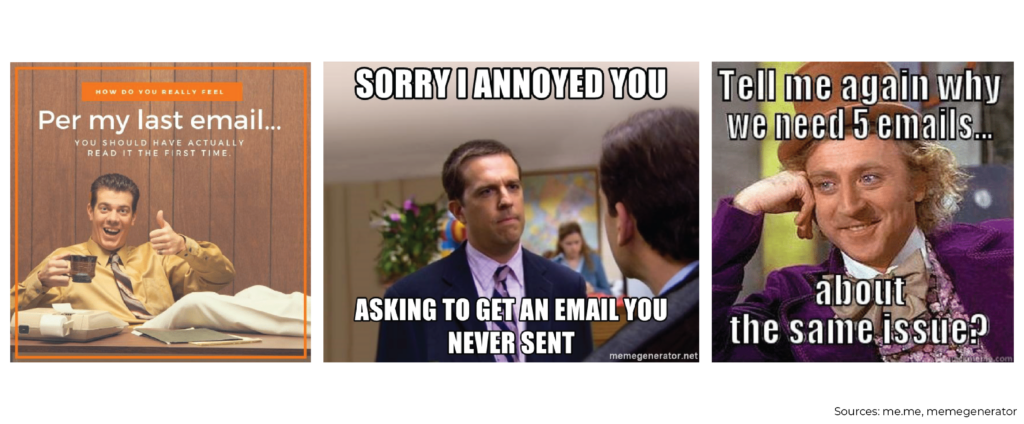
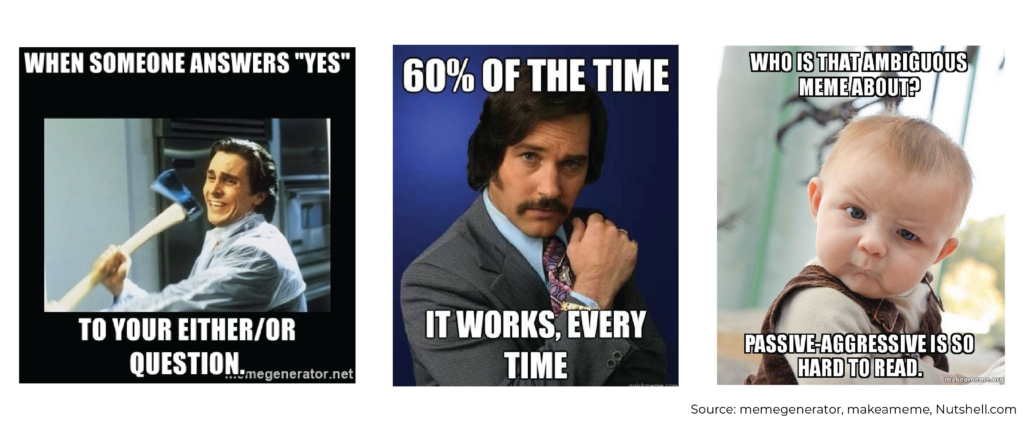
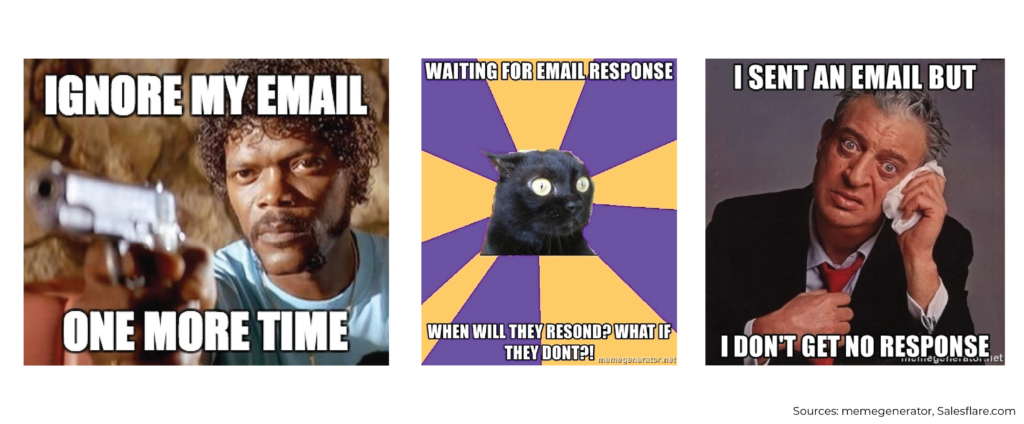
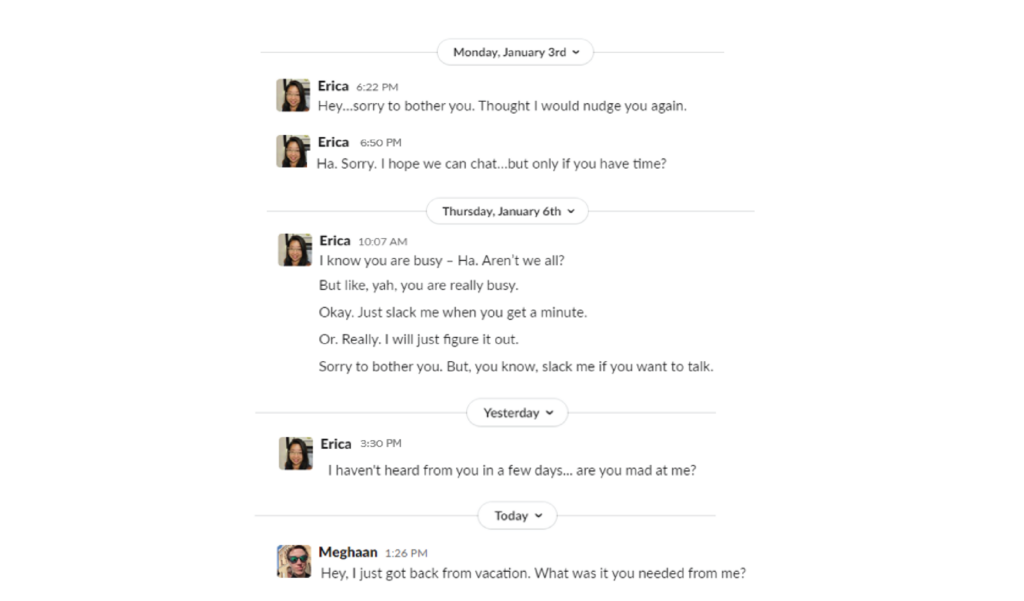
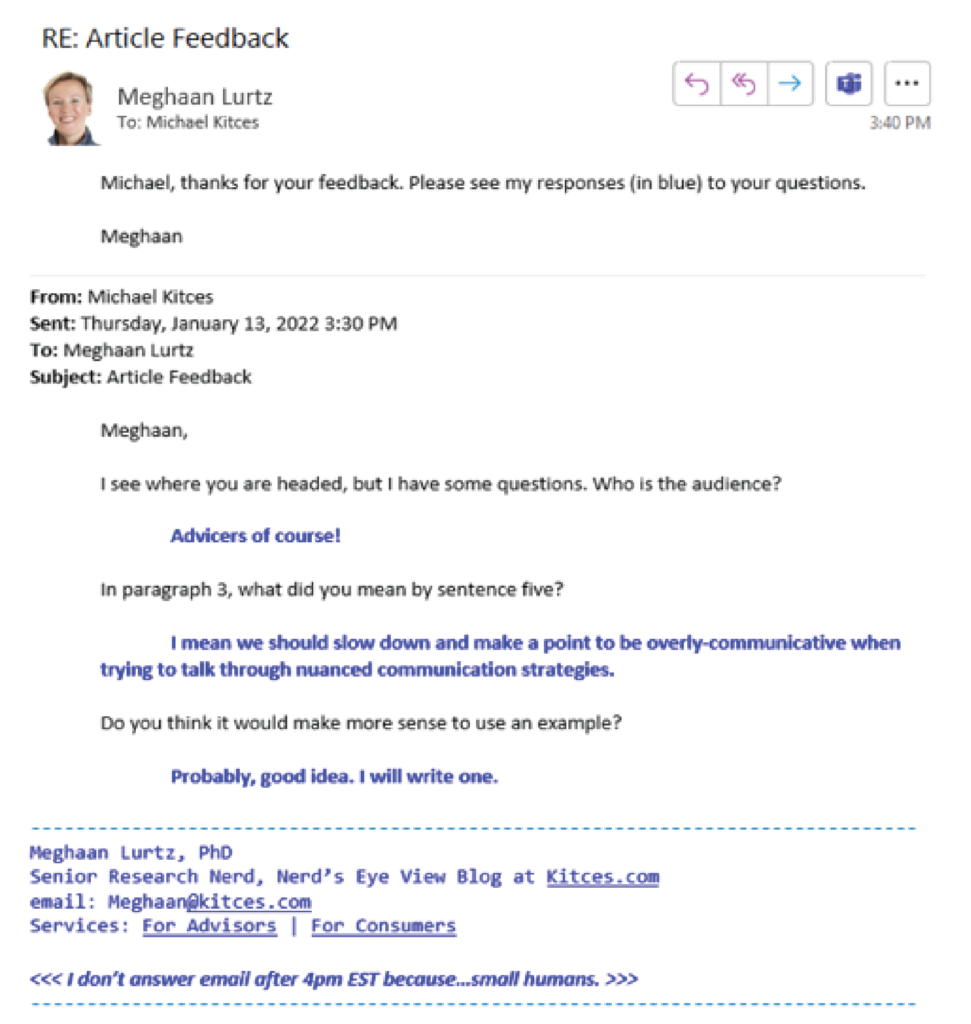




Leave a Reply